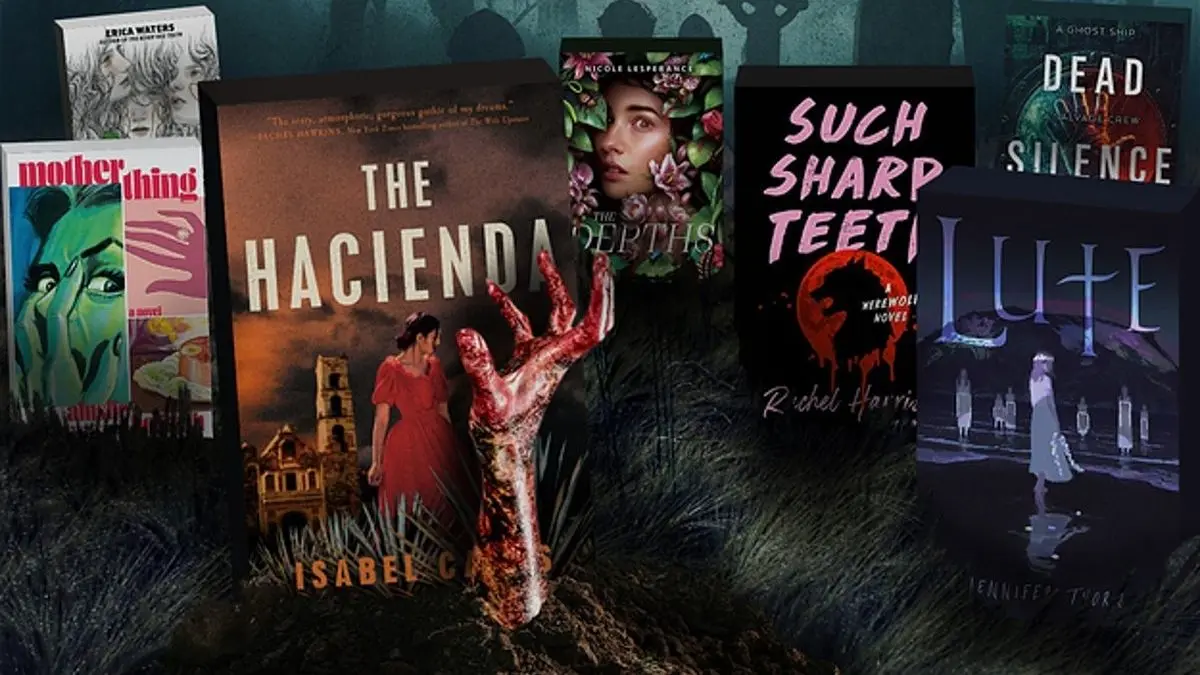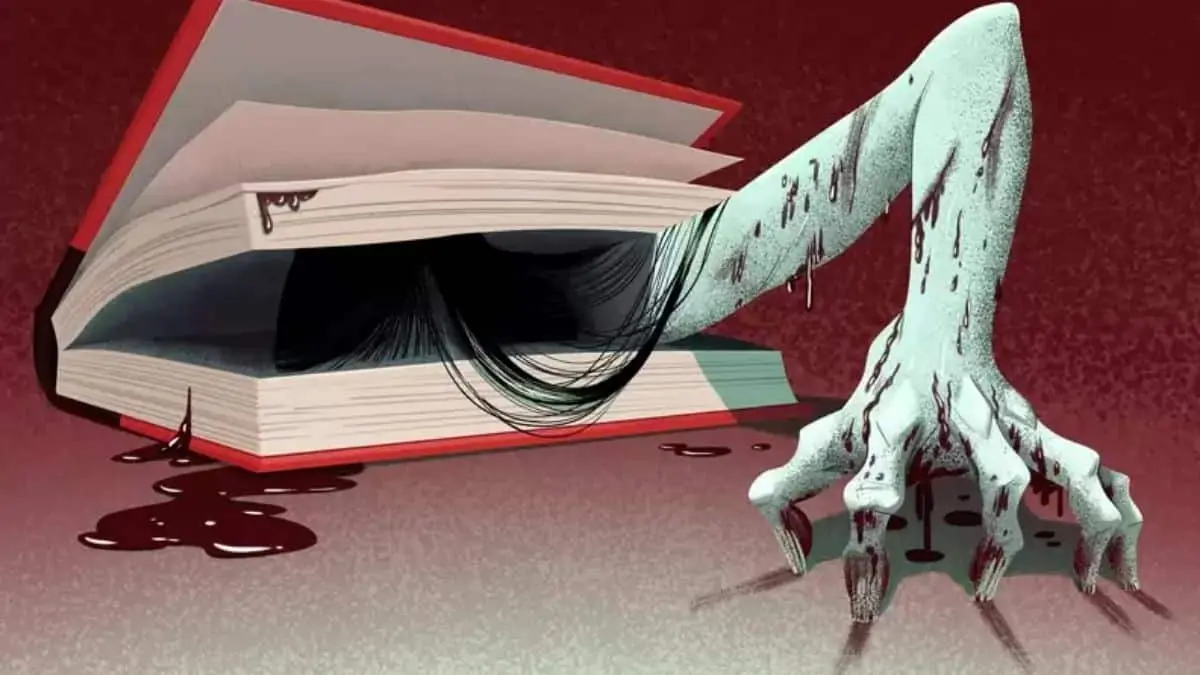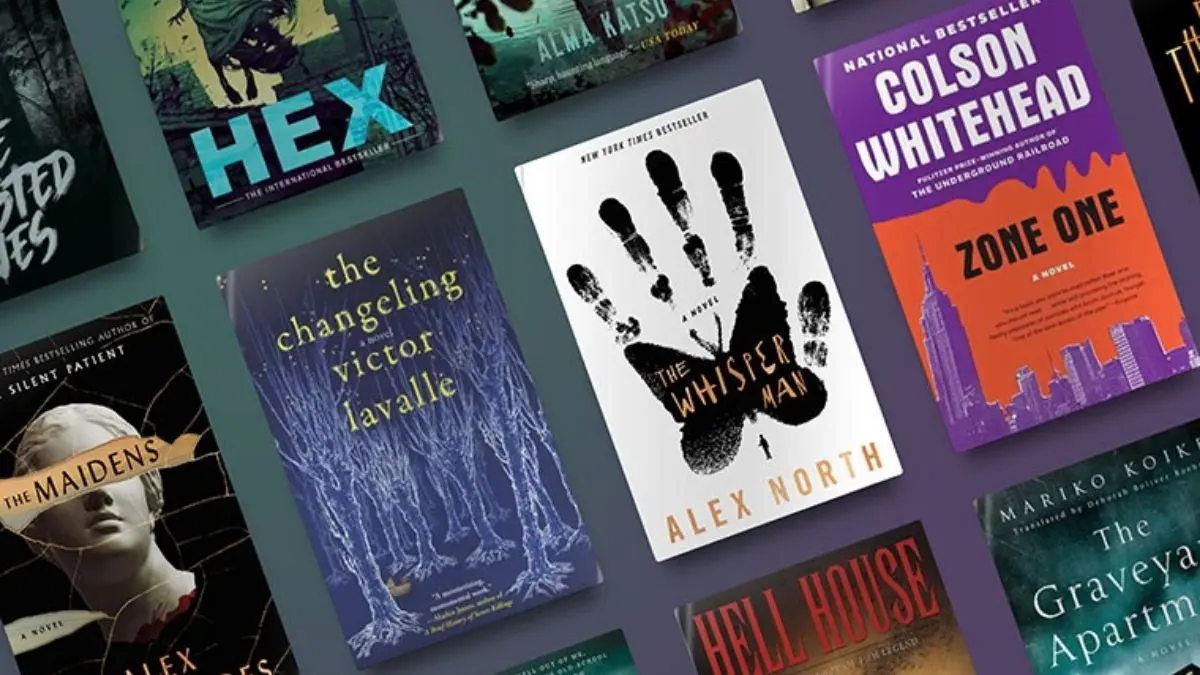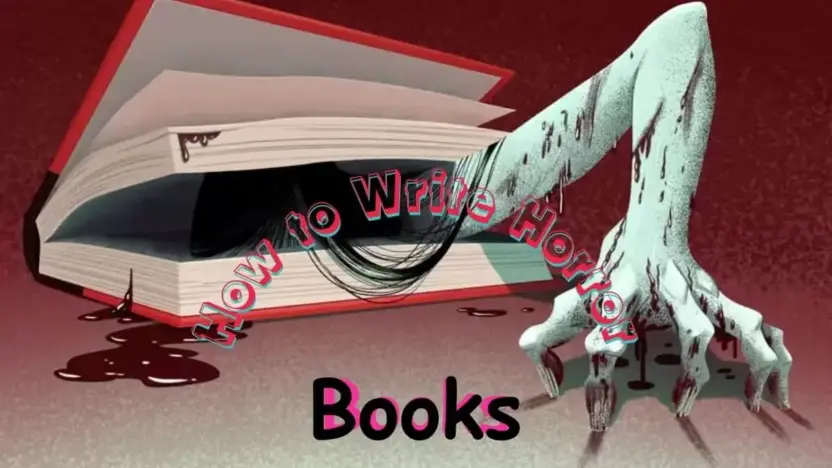The allure of the horror genre lies in its profound ability to engage with our deepest fears, presenting tales that both captivate and terrify us. Horror books, in particular, hold a unique power: they create immersive worlds that readers can get lost in, facing the unknown and the supernatural from the safety of their own imagination. This genre, rich in diversity and complexity, ranges from psychological thrillers and ghost stories to gothic horror and cosmic terror, each with its own method of unsettling the reader.
But what makes a horror book truly unforgettable? Is it the shock of the unexpected, the creeping dread of what lurks in the dark, or the psychological depth of a well-crafted monster? The answer lies in the skillful weaving of narrative elements that horror authors master. Writing horror is not just about eliciting fear—it’s about creating a compelling story that taps into universal anxieties, exploring the darker aspects of human nature and the unknown.
The aim of this blog “How to Write Horror Books?” is to unfold the secrets behind crafting gripping horror narratives. Whether you’re an aspiring writer fascinated by the horror genre or a seasoned author looking to delve deeper into the dark, this guide will provide you with the tools and insights necessary to pen horror stories that haunt your readers well beyond the last page.
Understanding the Horror Genre
At its core, the horror genre is a multifaceted tapestry, woven from the threads of human fear, curiosity, and the inherent fascination with the darker sides of existence. It’s a genre that does more than just scare or unsettle its audience; it probes into the depths of the human psyche, exploring themes of existential dread, the unknown, and the supernatural. But to write compelling horror, an understanding of its layers, nuances, and history is essential.

The Essence of Horror
Horror is defined by its ability to evoke fear, suspense, and a profound sense of discomfort in its audience. It’s a genre that relies heavily on the emotional and psychological impact on the reader, aiming to elicit a visceral response. From ghost stories whispered in the dead of night to tales of monstrous creatures and psychological unravelings, horror reflects our deepest anxieties and the terror of the unknown.
Sub-genres of Horror
The horror genre is rich and diverse, encompassing a wide range of sub-genres, each offering a unique perspective on fear:
- Psychological Horror: Focuses on the mental and emotional state of characters, exploring the depths of the human mind, and often blurring the lines between reality and nightmare.
- Gothic Horror: Characterized by its dark, brooding settings, and themes of decay, death, and madness, often set in castles, monasteries, and haunted houses.
- Supernatural Horror: Involves elements beyond the scientific understanding of humanity, including ghosts, demons, and otherworldly entities.
- Cosmic Horror: Popularized by H.P. Lovecraft, this sub-genre centers on the insignificance of humanity in the vast, incomprehensible universe, featuring entities with god-like powers and often indescribable appearances.
- Slasher and Survival Horror: Focuses on the physical survival of characters against a typically human monster with a penchant for violence.
Evolution of Horror
The horror genre has evolved significantly over the centuries, adapting to cultural and societal changes. From the Gothic novels of the 18th and 19th centuries to the psychological and cosmic horror stories of the 20th century, and the contemporary blend of horror elements seen today, the genre continues to evolve, reflecting societal fears and anxieties at each point in history.
Key Elements of Horror
- Fear and Suspense: The cornerstone of horror, these elements keep readers engaged and on edge.
- Atmosphere: The setting and descriptive elements that build the eerie and ominous mood of the story.
- Themes: Horror often explores themes such as death, the afterlife, the supernatural, and the nature of evil.
- Imagery: Vivid and sometimes disturbing imagery is used to evoke a sense of dread and horror in the reader.
Understanding these facets of the horror genre is crucial for writers looking to delve into horror writing. By recognizing the depth and breadth of horror, writers can explore the vast possibilities within the genre, crafting stories that resonate with universal fears while offering unique and compelling narratives. In the following sections, we’ll delve into how to harness these elements to create horror stories that not only scare but also captivate and intrigue your readers.
Developing Your Horror Story Idea
Crafting a horror story that resonates with readers requires more than just the desire to scare; it demands a compelling idea that taps into universal fears while offering a fresh perspective. The seed of your story is its foundation, and nurturing it from a mere concept into a full-fledged narrative is a journey. Here are steps to help you develop your horror story idea into a narrative that captivates and terrifies your audience.

Finding Inspiration
- Explore Real-World Fears: Start by reflecting on what genuinely scares people. Consider both timeless fears (death, the dark, isolation) and more contemporary anxieties (technology gone awry, pandemic outbreaks). Real-world inspirations can lend your story a relatable and palpable sense of dread.
- Dive into Myths and Legends: Every culture has its share of folklore replete with monsters, demons, and cautionary tales. These stories can be a goldmine for horror writers, offering a wealth of ideas that can be adapted or reimagined for modern audiences.
- Personal Fears: Tap into your own fears. Personalizing the horror can make your story more authentic and engaging. Think about what unsettles you, what keeps you up at night, and how you can translate that into a narrative.
Crafting a Unique Concept
- Avoid Clichés: While familiar tropes can be comforting, they can also be predictable. Challenge yourself to twist or subvert traditional horror elements. For instance, if haunted houses are a staple, consider what can make yours different. Is it the house itself that’s evil, or does it serve as a portal to somewhere unspeakable?
- Combine Elements: Don’t be afraid to mix horror sub-genres or blend horror with other genres like science fiction, fantasy, or mystery. This can create a unique backdrop for your story and open up new avenues for fear.
- Focus on Emotion: Horror isn’t just about the shock factor; it’s about evoking a deep emotional response from your readers. Think about the emotions you want to explore, such as despair, paranoia, or obsession, and how they can drive your narrative.
Solidifying Your Premise
- Define the Central Conflict: Identify what lies at the heart of your story. Is it a battle against a supernatural entity, a struggle to maintain sanity, or a fight for survival in a post-apocalyptic world?
- Outline the Stakes: Clearly outline what’s at risk. The higher the stakes, the more the reader will care about your characters and their journey. Whether it’s the fate of the world or the survival of a single individual, make sure the consequences of failure are dire.
- Create a Hook: Your story needs to grab readers from the beginning. Think about a compelling opening scene or premise that immediately immerses them in the world you’ve created. This could be a mysterious disappearance, a chilling legend, or an inexplicable phenomenon.
By thoughtfully developing your horror story idea, you can create a narrative that not only frightens but also deeply engages your readers, making them ponder long after they’ve turned the last page. The key is to blend originality with universal themes, crafting a tale that is both unique and universally terrifying.
Crafting Memorable Characters
Characters are the soul of any story, and in horror, they are the ones who guide us through the darkness, confront unimaginable terrors, or sometimes, embody the terror themselves. Creating memorable characters in horror fiction is crucial because they are the reader’s emotional anchor, and their journey is what makes the fear feel real and the stakes feel high. Here’s how to craft characters that stand out and enhance the horror of your narrative.
Building Complex Protagonists
- Flawed and Relatable: Your protagonist should have flaws and vulnerabilities that make them relatable to readers. These weaknesses can be exploited by the horrors they face, making their struggles more intense and their victories more satisfying.
- Backstories That Matter: A well-thought-out backstory can add depth to your characters and explain their motivations, fears, and reactions to the horror they encounter. This backstory can also be a source of the horror itself.
- Evolution Throughout the Story: The best characters undergo significant development, especially in horror stories. Their experiences should change them in meaningful ways, whether it’s gaining new strengths, overcoming personal demons, or succumbing to the darkness.
Crafting Antagonists and Monsters
- Beyond Pure Evil: While the embodiment of pure evil can be frightening, an antagonist with motives, a backstory, or a particular connection to the protagonist can be far more terrifying and intriguing.
- Unpredictability: A great horror villain or monster is unpredictable, making it hard for both characters and readers to anticipate their next move. This unpredictability adds to the suspense and fear.
- Physical and Psychological Presence: The best horror antagonists have a presence that’s felt even when they’re not on the page. They haunt the thoughts of the protagonist and the reader, creating a lingering sense of dread.
Utilizing Secondary Characters
- Enhance the Main Narrative: Secondary characters should serve to enhance or contrast with the main narrative. They can provide necessary relief, add to the horror, or help deepen the protagonist’s character arc.
- Diverse Perspectives: They can offer different viewpoints on the horror, providing a richer, more nuanced exploration of the story’s themes.
- Memorable Traits: Even minor characters can be memorable if they have distinctive traits or play a pivotal role at a key moment in the story. They don’t need to be deeply developed, but they should leave an impression.
The Role of Characters in Horror
Characters in horror are not just victims or heroes; they’re a medium through which we explore our own fears, desires, and moral boundaries. Through their eyes, we confront the unknown, grapple with the unthinkable, and sometimes, find the strength to face our darkest fears. Their humanity, with all its flaws and complexities, makes the horror personal and the narrative compelling.
Setting and Atmosphere
The power of a horror story often lies in its setting and atmosphere, which can turn the ordinary into the terrifying and make the unimaginable feel close enough to touch. A well-crafted setting does more than provide a backdrop; it enhances the mood, supports the narrative, and immerses readers in a world where their deepest fears come to life. Here’s how to create settings and atmospheres that haunt your readers well beyond the final page.
Crafting the Setting
- Choose a Setting That Amplifies Fear: Whether it’s an isolated cabin, a bustling city at night, or a seemingly ordinary suburb, the setting should contribute to the horror in some way. Think about what makes this place inherently eerie or how it can become a character in its own right.
- Use Real Locations as Inspiration: Drawing inspiration from real places can add authenticity to your setting. Research haunted locations, abandoned places, or areas with a history of strange occurrences for ideas.
- Detail and Sensory Description: Utilize all five senses to bring your setting to life. The more you can immerse your reader in the world, the more real—and thus frightening—the horror becomes. Describe not just how the place looks, but how it smells, sounds, feels, and even tastes.
Building Atmosphere
- Mood Through Language: The words you choose can dramatically affect the atmosphere of your story. Use descriptive language to create a mood that is oppressive, foreboding, or suffocatingly close. Your narrative voice plays a crucial role in shaping the reader’s experience of the story’s world.
- Pacing and Suspense: Atmosphere isn’t just about description; it’s also built through pacing and suspense. Slowly reveal the horror, letting the tension build gradually. Use short, sharp sentences to heighten suspense in key moments.
- Contrast and Dissonance: Introducing elements that don’t belong or creating a sense of wrongness can effectively unsettle readers. This can be achieved through contrasting the seemingly peaceful or normal with sudden intrusions of the horrific, emphasizing how quickly safety can turn to terror.
Integrating Setting with Story
- Interplay Between Setting and Characters: How characters interact with their environment can add depth to both the setting and the characters themselves. Their perceptions can alter how the reader views the setting, turning even the most benign environments into sources of fear.
- Setting as a Reflection of Theme: Use your setting to reflect broader themes in your story, such as isolation, madness, or the intrusion of the uncanny into the mundane. This can deepen the reader’s engagement with the story and enhance the overall impact of the horror.
- Dynamic Settings: Allow your setting to evolve alongside the story. A place that starts as a safe haven might gradually reveal its true, sinister nature, or a nightmarish landscape could become a site of unexpected sanctuary or revelation.
The setting and atmosphere in a horror story are essential tools in creating a visceral, immersive experience for the reader.
Plotting Your Horror Story
The plot is the skeleton of your story, providing structure and direction to the narrative. In horror writing, the plot not only drives the story forward but also serves as a vehicle for delivering scares, building tension, and exploring deeper themes. A well-crafted plot can elevate a horror story from simply frightening to profoundly unsettling and memorable. Here’s how to plot your horror story for maximum impact.

Structuring Your Narrative
- Beginning – Establishing Normalcy: Start by introducing your characters and setting, establishing what ‘normal’ looks like before the horror begins. This contrast highlights the impact of the ensuing terror and makes the descent into horror more jarring.
- Middle – Escalation and Revelation: The middle of your story should gradually increase tension and fear. Introduce obstacles, twists, and revelations that challenge your characters and deepen the horror. This is where the core of your story unfolds, layering scares with character development and plot advancement.
- End – Climax and Resolution: The climax is the peak of your horror story, where tensions reach their highest point. It should be both a confrontation with the main source of horror and a resolution to the central conflict. The resolution, whether bleak or hopeful, provides closure to the narrative, leaving a lasting impression on the reader.
Balancing Tension and Release
- Pacing: Control the pacing of your story to maintain reader interest. Use slower, tension-building scenes to create suspense, and faster-paced scenes for moments of horror and action. The interplay between tension and release keeps readers on edge.
- Foreshadowing: Plant subtle clues throughout your story that hint at the horrors to come. Foreshadowing not only builds anticipation but also adds depth to your narrative, rewarding attentive readers.
- Surprise and Unpredictability: While some horror elements may be anticipated, strive to surprise your readers. Unexpected plot twists or revelations can reinvigorate the narrative and renew the sense of dread.
Incorporating Themes and Symbolism
- Themes: Horror stories often explore deeper themes—such as loss, guilt, or the nature of evil—that give the narrative substance beyond scares. Integrate these themes into your plot to create a story that resonates on multiple levels.
- Symbolism: Use symbols to enrich your story’s layers and add meaning to the horror. Symbols can be manifest in settings, characters, or recurring motifs, contributing to the overall atmosphere and theme.
Writing Effective Horror Scenes
- Show, Don’t Tell: Let your readers experience the horror through the characters’ senses and emotions rather than simply describing it. Showing rather than telling makes the fear more palpable and engaging.
- Isolation: Amplify the horror by isolating your characters, either physically, psychologically, or socially. Isolation heightens vulnerability, making the terror more intense.
- The Unseen and Unknown: Sometimes, what’s left to the imagination can be more terrifying than what’s shown. Play with the unknown and the unseen to create fear of what might lurk in the shadows.
Plotting a horror story requires a delicate balance between developing a compelling narrative and delivering effective scares.
Writing Techniques for Horror

Mastering the craft of horror writing involves more than just understanding its elements; it requires specific techniques to effectively evoke fear, suspense, and a haunting atmosphere. These techniques are the tools you need to turn a good horror story into an unforgettable journey into the depths of fear. Here are essential writing techniques to enhance the horror and impact of your stories.
Show, Don’t Tell
- Invoke the Senses: Use detailed sensory descriptions to make the experience more vivid for the reader. The sound of footsteps in an empty hallway, the sudden chill of an unseen presence, the faint smell of something decayed—these are the details that build a palpable sense of dread.
- Emotional Resonance: Instead of stating how a character feels, show it through their actions, thoughts, and reactions. Let the reader infer the terror, which can often be more impactful than directly describing it.
Use of Language and Tone
- Selective Descriptions: Focus on details that amplify the horror. Over-describing can dilute the fear factor, so select your details strategically to heighten the sense of unease.
- Tone Consistency: Maintain a tone that complements the story’s mood. A foreboding, ominous tone can keep the reader immersed in the horror narrative, even during quieter moments.
Pacing for Maximum Impact
- Vary Sentence Structure: Use short, punchy sentences to heighten tension and longer, more descriptive sentences to build suspense or delve into the horror.
- Timing of Reveals: Strategically time your reveals and scares for maximum impact. The anticipation of horror can be as terrifying as the reveal itself. Use pacing to control the reader’s emotions, leading them through cycles of tension and relief.
Creating Atmosphere
- Setting as Character: Treat your setting like a character—a living, breathing entity with its own mood and secrets. Let the environment contribute to the horror through oppressive atmospheres, unpredictable dangers, or by mirroring the protagonist’s psychological state.
- Symbolism and Imagery: Employ symbolism and dark imagery to add layers to the narrative. Symbols can serve as harbingers of doom or represent thematic elements, adding depth to the horror.
Psychological Depth
- Inner Demons: Explore the psychological dimensions of fear. Characters battling with their own minds can be as terrifying as external monsters. The blurring line between reality and hallucination can create an unsettling experience for the reader.
- Unreliable Narrators: Use unreliable narrators to keep readers guessing. When the truth is obscured, the imagination fills in the gaps, often with something far more terrifying.
Crafting Scenes That Linger
- Leave Something to the Imagination: Don’t reveal everything. The unknown is a powerful tool in horror writing. Let readers’ imaginations take charge at times, as what they conjure can be scarier than anything explicitly described.
- Cliffhangers and Open Endings: Use cliffhangers judiciously to keep readers wanting more. An open ending, especially in horror, can leave a lasting impression, as the uncertainty about what comes next lingers in the reader’s mind.
Conclusion
Horror is a genre that demands not only a keen understanding of what terrifies us but also a profound empathy for the human condition. As we’ve explored the elements of crafting horror—from developing your story idea and creating memorable characters to setting the perfect atmosphere and plotting your narrative—the overarching theme has been about connection. Connecting to our primal fears, to our capacity for empathy, and to the boundless possibilities of our imagination.



